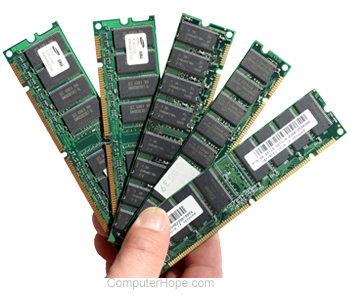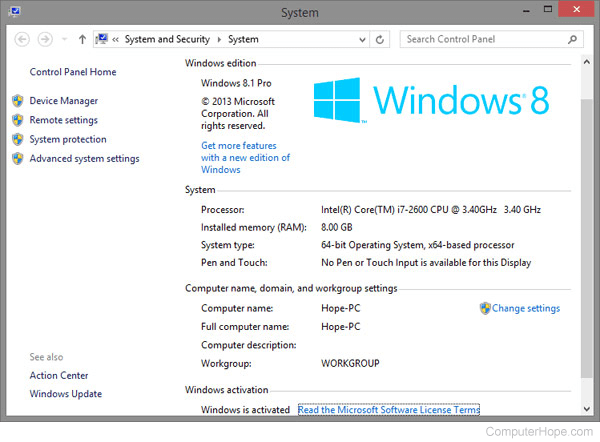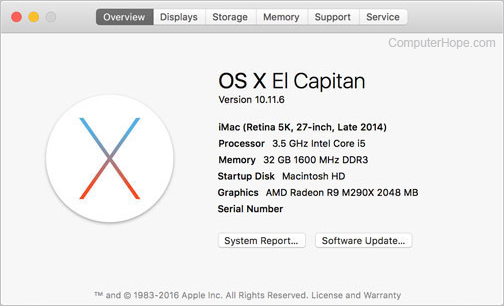How much RAM can my computer have?

The total amount of memory, or RAM (random-access memory), a computer can have is dependent on the motherboard installed in the computer and the operating system. In general, most motherboards will support either two or four memory modules, but the type and amount of memory can differ widely from one motherboard to the next.
If you are trying to find memory specifications for upgrading your computer memory, see: What type of computer memory to use in a memory upgrade.
If you are unsure what operating system you have, see: How to find what operating system is on a computer.
Microsoft Windows computers
How much ram your computer can hold depends on if you're running a 32 or 64-bit version of Windows, which depends on your CPU (central processing unit). The capacities are as follows, permitting you have the physical space to fit the RAM modules.
- 32-bit systems - up to 4 GB
- 64-bit systems - Windows 10 Home supports up to 128 GB. However, Windows 10 Pro, Education, and Enterprise allow as much as 2 TB.
How to find out if you have a 32-bit or 64-bit version of Windows
- Press Windows key+Pause.
- A new window should appear that says System at the top, like the one shown below.

- Under the System section, next to System type:, you can see if your version of Windows is 32-bit or 64-bit.
Once you know the type of memory and the total amount of memory the computer supports, you can increase the amount of memory by installing additional sticks of RAM. You can also replace existing sticks of RAM with ones having a higher amount of memory.
Apple macOS computers
- Click the Apple icon in the upper-left corner to open the Apple menu.
- In the drop-down menu, select About This Mac.
- You should see a window open that's like the one shown below.

- Visit Apple's page for a table containing the max RAM for each machine, based on the information in the iMac section in the above window.
Once you know the type of memory and the total amount of memory the computer supports, you can increase the amount of memory by installing additional sticks of RAM. You can also replace existing sticks of RAM with ones having a higher amount of memory.
Linux and Unix-based computers
Like a Windows-based computer, Linux-based machines' maximum RAM is based on whether they have 32-bit or 64-bit architecture. Most 32-bit Linux systems only support 4 GB of RAM, unless the PAE (Physical Address Extension) kernel is enabled, which allows a 64 GB max. However, 64-bit variants support between 1 and 256 TB.
To determine how much ram your Linux-based computer supports, open the Terminal (Ctrl+Alt+T) and type the following command:
sudo dmidecode -t 16
Look for the Maximum Capacity section to see the limit on RAM.
Once you know the type of memory and the total amount of memory the computer supports, you can increase the amount of memory by installing additional sticks of RAM. You can also replace existing sticks of RAM with ones having a higher amount of memory.
